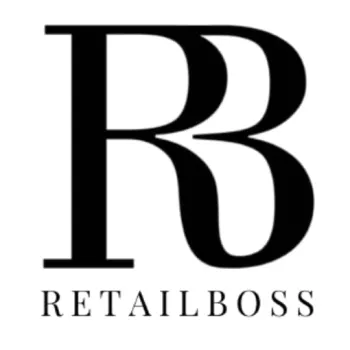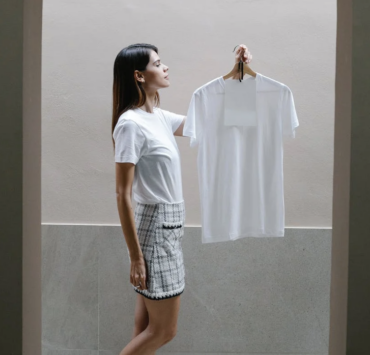As an entrepreneur, getting your product into retail stores can be a game-changer for your brand. While ecommerce is booming, brick-and-mortar stores still hold a significant place in the market. Customers often prefer to see and try a product in person before making a purchase. However, with so much competition, it can be challenging to stand out and secure a partnership with a retail store. In this article, we will provide you with a step-by-step guide on how to successfully get your product into retail stores.
Step 1: Research and Identify Your Target Market
Before approaching retail stores, it's crucial to research and identify your target market. Understanding the demographics and preferences of your potential customers will help you tailor your pitch and demonstrate why your product is a perfect fit for the store. Additionally, research the products currently on the store's shelves that your product will replace. This will allow you to highlight the sales lift that the store can expect if they switch to your product.
Step 2: Craft a Compelling Pitch
To grab the attention of retail buyers, you need to craft a compelling pitch that clearly communicates the unique value proposition of your product. Start by understanding the needs that your product can fulfill for the store. This could include solving a problem, appealing to a specific target audience, or offering a unique feature. Show the buyer why your product is the perfect fit for their customers and how it can contribute to their brand.
Step 3: Showcase Your Sales Data and Success Stories
Retail buyers are interested in products that can drive sales and profitability. To demonstrate the potential of your product, provide them with sales data from similar stores where your product is already being sold. Highlight the performance metrics, such as revenue growth and customer satisfaction, to showcase the success of your product. Additionally, share testimonials and success stories from previous customers to build credibility and trust.
Step 4: Start Small and Build Local Presence
Starting small and building a local presence is an effective strategy to get your product on retail shelves. Begin by targeting local stores in your community and networking with the decision-makers. Engage with your potential customers and create local awareness through word-of-mouth marketing. Encourage consumers to ask for your product in their local stores, as this can create demand and show retailers that customers are interested.
Step 5: Establish an Online Presence
Before approaching retail stores, it's beneficial to establish an online presence for your product. Create a professional website and optimize it for search engines to increase your online visibility. Utilize social media platforms to generate buzz and engage with potential customers. Start a social media campaign to create hype around your product and gain exposure. This online presence will not only attract customers but also make it easier to convince retailers to stock your product.
Step 6: Develop a Sales and Marketing Strategy
Having a well-defined sales and marketing strategy is crucial to convince retail stores to carry your product. Clearly articulate your value proposition and profitability to retailers. Show them how carrying your product will benefit their business and increase their revenue. Additionally, outline your marketing plans and strategies to drive customer awareness and sales. Retailers want to partner with brands that have a comprehensive plan for success.
Step 7: Offer Competitive Pricing and Promotions
Pricing plays a significant role in retail partnerships. Analyze competitor pricing and customer price expectations to determine a competitive yet profitable price for your product. Retailers want products that will attract customers and generate sales, so ensure your pricing strategy aligns with their expectations. Additionally, develop attractive promotional campaigns that align with your brand and target market. Promotions can help drive customer awareness and increase sales.
Step 8: Demonstrate Financial Stability
When approaching retail buyers, it's essential to demonstrate your financial stability and ability to meet the demands of retail expansion. Present historical and forecasted financial projections that show your capacity to support the investment in inventory and marketing. Retailers want to partner with brands that can sustain long-term growth and profitability. Consider securing additional funding if necessary to support your retail expansion plans.
Step 9: Build Efficient Supply Chain and Logistics
A smooth and efficient supply chain is crucial for successful retail partnerships. Evaluate and optimize your sourcing, production, inventory management, and delivery processes to meet the demands of retail distribution. Establish relationships with reliable logistics providers who can handle retail fulfillment and ensure timely delivery of products. Retailers need assurance that your product will be consistently available on their shelves.
Step 10: Network and Partner with Other Brands
Collaborating with other brands can be a strategic move to get your product into retail stores. Partnering with complementary brands or retailers can create synergy and increase your chances of securing a retail partnership. Consider joint promotional campaigns or bundled offerings that add value to the retailer and customers. By leveraging partnerships, you can strengthen your brand presence and attract the attention of retail buyers.
Step 11: Attend Trade Shows and Industry Events
Trade shows and industry events are excellent opportunities to showcase your product and connect with retail buyers. Research and select relevant trade shows in your industry where retailers are likely to attend. Create an attractive booth display that captures attention and effectively communicates your brand and product. Engage with potential buyers, distribute samples, and collect leads. Trade shows can be a catalyst for getting your product noticed by retail buyers.
Step 12: Persistence and Flexibility
Finally, remain persistent and flexible in your pursuit of retail partnerships. Understand that the process may involve multiple rejections and setbacks. Be open to feedback and adapt your approach accordingly. Persistence, combined with a willingness to adjust your strategies, can eventually lead to successful retail partnerships. Keep refining your pitch, improving your product, and seeking opportunities to showcase its value.
Are You Ready For Retail?
First impressions are everything, as the saying goes. The statement could not be more accurate regarding impressing retail buyers. However, many small businesses pitch or submit their brands without doing the necessary due diligence to ensure their brand is ready for retail. We have experience with brands with retail marketing and growth strategies.
If you need clarity on your product and want to get into a retailer, we have a proven step system to help you to secure your product on retail shelves.
Sent us an email for inquiries contact us at consulting@retailboss.co



